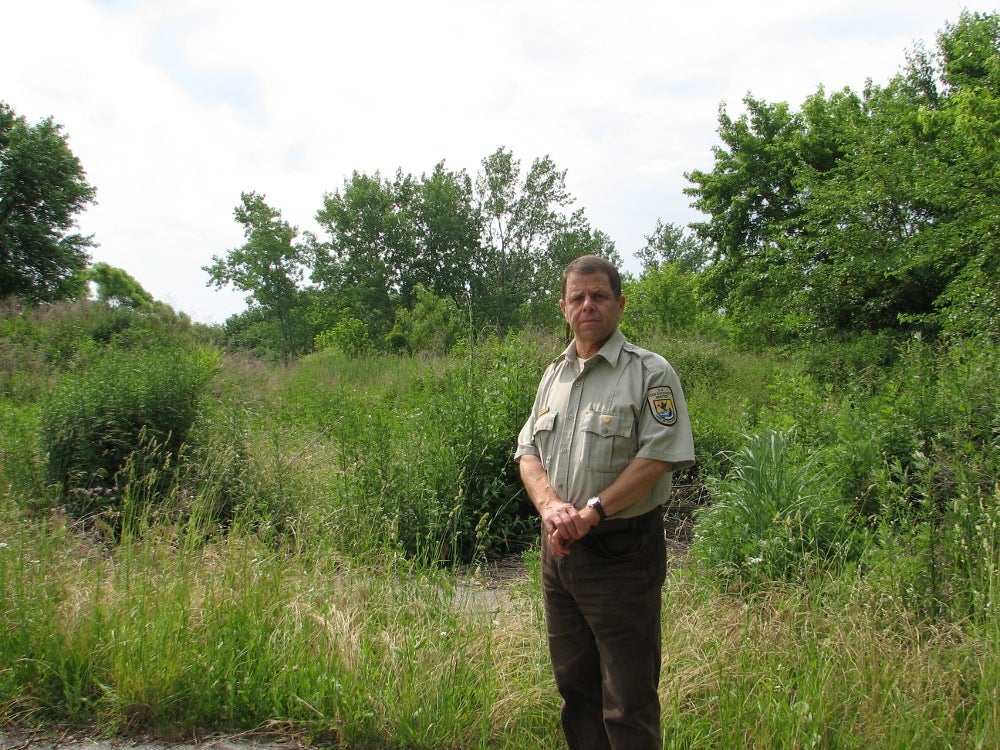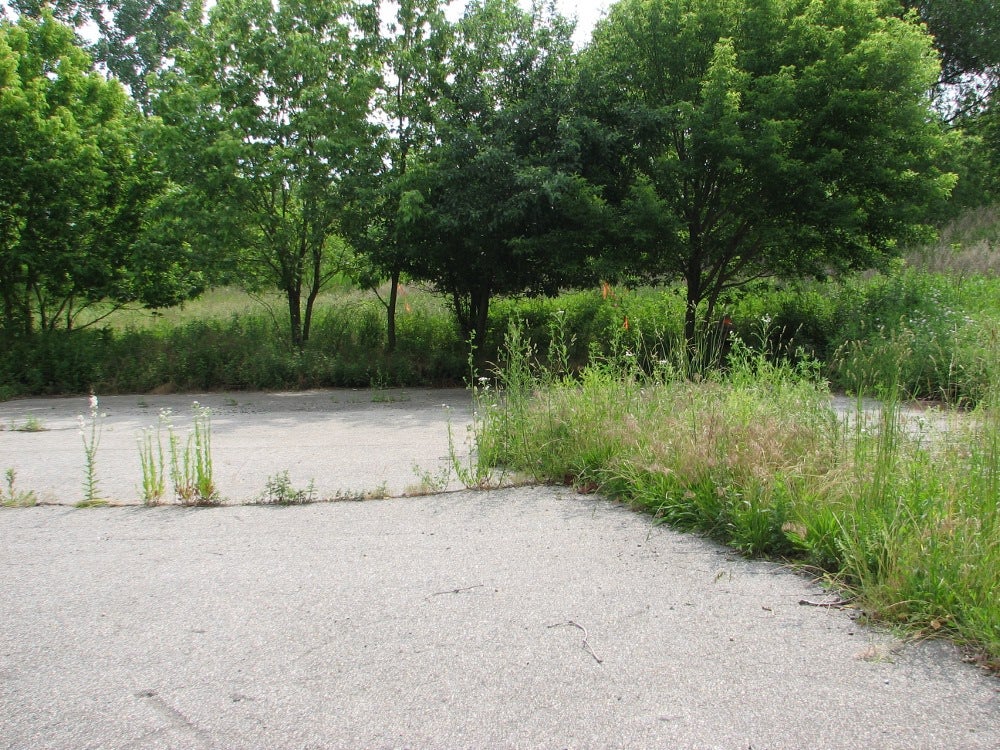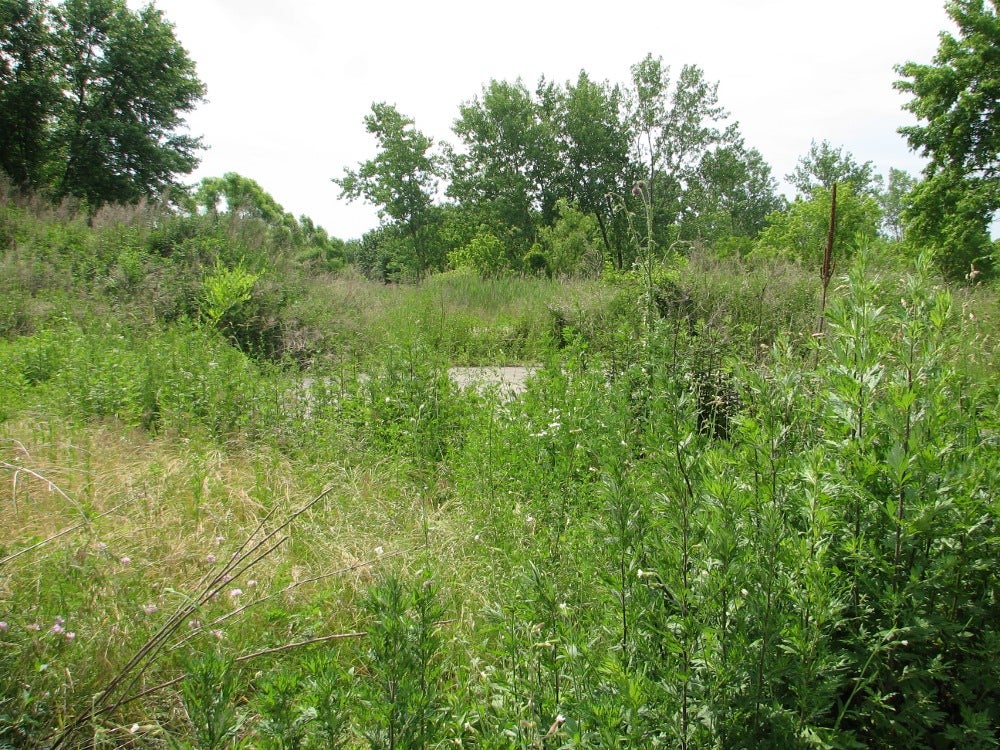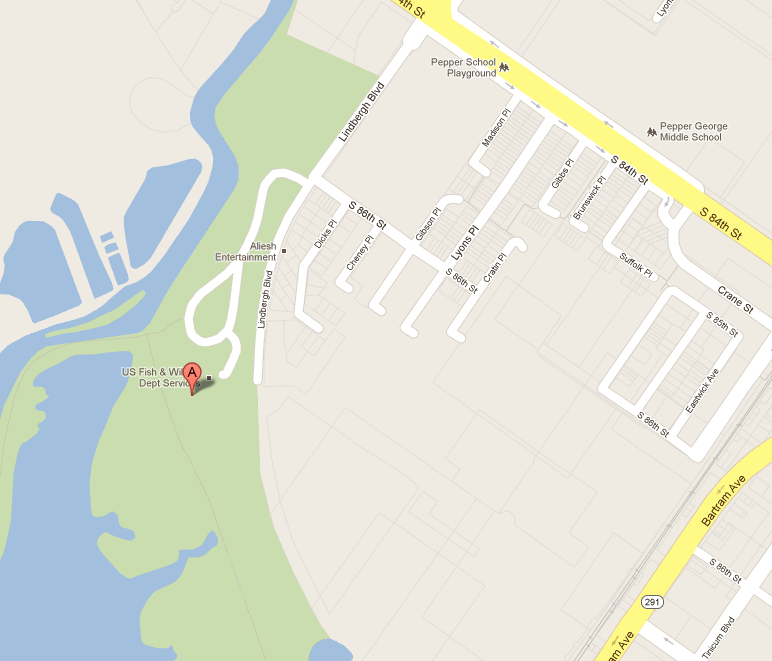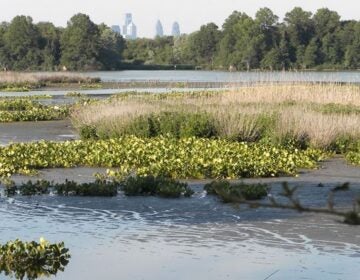Critics of planned Eastwick apartment complex say it would harm the John Heinz refuge and increase flood risk
Eastwick residents, advocates for the John Heinz National Wildlife Refuge, and the Delaware Riverkeeper Network have coalesced to fight a 722-unit, 35-acre apartment complex proposed for city-owned land adjacent to the refuge and a related transfer of 93 acres to Philadelphia International Airport.
Their concerns include habitat loss, run-off pollution and flooding. Local residents are also concerned about increased traffic and an influx of about 1,000 renters, who they say will not be as invested in the community as homeowners would be.
The opposition intends to swamp upcoming city council committee meetings on Tuesday and Wednesday in hopes of convincing council members not to send a zoning bill developer Korman Residential needs to full council. That bill would allow Korman to build apartments instead of single family homes and it is making its way through committee with a land use bill that would transfer the 93 acres from the Philadelphia Redevelopment Authority to the Philadelphia International Airport. The airport has not yet determined what it would do with the acreage.
“I can’t believe Philadelphia would endorse the plan when they are spending millions to fix storm water issues in the city,” said Fred Stine, Delaware Riverkeeper Network citizen action coordinator. “They are letting 135 acres go by that could further their goals for storm water management.”
Refuge manager Gary Stolz gives an overview of Heinz and his concerns about proposed development.
Stine said existing area homes already experience flooding. Developing the land means water will have fewer places to go, and flooding will happen more frequently. The Delaware Riverkeeper Network will consider litigation, if necessary, to stop anyone from putting “more impervious surfaces on a floodplain,” Stine said.
Korman Residential has held the option to develop the entire 128 acres of land, all of which is owned by the city-affiliated Philadelphia Redevelopment Authority, for decades. Through a negotiated settlement with the city, the company relinquished the rights on the 93 acres. If Korman’s plan for developing the 35 acres passes the current hurdle and others down the road, Korman would purchase the land from the PRA, under the terms of the existing contract.
Korman Attorney Peter Kelsen said the construction of the apartments will create 590 jobs during construction, which Korman plans to do in four phases, commencing in 2014. It will then provide millions in economic impact and annual tax revenue for the city and in-demand rental housing for people who work at the airport and other nearby employers. The additional residents will also help support existing shopping and other amenities and draw more in, he said.
Those benefits mean little compared to the long-term damage the development could cause the Schuylkill and Delaware Rivers, the tidal marsh, the plants and animals of the refuge and their existing human neighbors, opponents say.
Stine, of the Riverkeeper Network, said he’s also concerned about future residents of the development. “We would be putting them in harm’s way” due to flooding issues. Particularly in this era of global warming and rising tides, the city should not allow new development in a floodplain, he said
Kelsen said he’s confident the development will not result in increased flooding. Due to the sheer size of the proposed development, Korman must work with the city water department on its development plan. “They have zero tolerance,” Kelsen said. “We would have to better manage the runoff that currently exists.”
There is such a thing as pervious pavement – a surface that allows people or vehicles to move across it while allowing water to pass through. Kelsen said it is way too early to say whether Korman will use it in the development. He is also not sure what sort of environmental testing might be required on the site. The area used to be wetlands, but was filled in years ago, so wetland protections do not apply. However, if the fill contains environmental contaminants, it would have to be cleaned up before residences could be built.
Kelsen said that detailed planning is down the road. Before any of that detailed planning can happen, Korman needs City Council to pass the proposed legislation: the zoning bill that would change the zoning from R9 to R12, allowing multi-family development and a streets bill that would wipe portions of some streets from the city plan. Korman would actually develop those streets as they are laid out, but they would be private to the development and the city would not maintain them. This bill has passed out of committee.
The Philadelphia City Planning Commission has recommended city council pass these bills and the property bill that would transfer the 93 acres to the airport. The Commission urged the developer to continue to meet with residents.
Opponents plan to turn out en masse to Tuesday’s Rules Committee hearing and Wednesday’s Public Property and Public Works Committee hearing.
As a group, they would prefer the land remain undeveloped – in either its current state, or, even better, restored to the wetlands it once was.
But neighborhood residents are more amenable to the single-family home development the area was destined for under current zoning and the Eastwick Urban Renewal Plan. Learn more from one representative’s comments to the city planning commission, here.
Environmental advocates say single-family or multi-family, any development would be harmful.
Heinz is permanent home or migration rest spot for more than 300 species of birds, and many plants and animals – some of them, such as the Coastal Plain Leopard Frog, are rare, said Refuge Manager Gary Stolz. These plants and animals don’t observe refuge boundaries and use the undeveloped land that borders the refuge as well, he said. The property is no longer the wetlands it once was, but even with the fill that has been added, the fields and woods are valuable, and pockets of wet areas, including vernal pools, remain, he said.
In addition to the loss of habitat, more human activity means more light that can disorient species such as owls, which are nocturnal, and amphibians, which breed only at night. Petroleum products, fertilizers and pesticides can run off into the refuge. And escaped non-native ornamental plants can crowd out native species. Escaped domestic animals, such as cats, are a threat to fauna.
If the development progresses, cooperation?
Stolz finds himself in an interesting position. He knows he has no jurisdiction over land outside the refuge boundaries. And he likes Korman company officials, and knows they have a business to run. “They have always been good neighbors,” he said.
Stolz opposes the development because it’s his job to protect the refuge. But there are better and worse ways for development to occur, he said. And Korman has been open in discussions on how to make its planned development a better one.
Kelsen says his client is indeed interested in protecting the refuge, and has agreed to creating a buffer between the apartment complex and the refuge and to using native plants in landscaping, particularly in sensitive areas.
Standing near the development site, Stolz shows the proximity to the refuge and talks of plants and animals.
Without a buffer, the apartments could be seen from the Heinz visitors center during the months when trees are leafless. Hank Hox, president of the Friends of Heinz Refuge, said white pine trees would be a good option for the buffer, since they grow relatively fast. He is also interested in a fence separating the apartments from the refuge, so that people must enter using the front gate. Vandalism is a concern.
Heinz is the most urban wildlife refuge in the country, Stolz said. As accessible as it is to a large population now, he believes it could be available to many more people, including more school children, with a walking trail between the Eastwick SEPTA station and the refuge entrance.
The apartment complex would block the best route, he said.
There are liability and other issues to consider, Kelsen said, but Korman and Stolz are talking about such a path.
Eastwick residents are very concerned about additional flooding and the plants and animals of the refuge, but they also have lifestyle concerns. The current zoning allows for single-family homes, but not apartments. Concerned Citizens of Eastwick Coalition would prefer the developer build under the current regulations.
Hox said that he is sympathetic to the resident’s lifestyle concerns, but from his environmental standpoint, any style of development is equally bad.
Kelsen said there just isn’t a market for single-family homes in this economy.
When the three bills came before the Philadelphia City Planning Commission, chairman and Deputy Mayor for Economic Development Alan Greenberger said a renter vs. owner argument would never sway his vote, in part because he’s never bought the argument that renters don’t care about their communities, and in part because so many more people have to rent now. Slightly less than 50 percent of all Philadelphians rent, he said.
Is development inevitable?
Korman has held the development option since 1961. It has been renewed several times, with the latest option set to expire in 2015. For decades, The Eastwick Urban Renewal Plan has called for residential development over the entire 135 acres, and more; Korman has already built single-family homes and an apartment community similar to the one it has planned for the 35 acre parcel, International Village.
Residents point out that the development planned for decades was single-family housing, not apartments. Korman points out that the apartments are much like those on its adjacent property.
The bottom line, Hox said, is that Korman by contract “has the right of first refusal.”
The city cannot change its mind on those plans unilaterally, Korman attorney Kelsen said. The property is “subject to a redevelopment agreement that would have to be amended,” he said. The PRA would have to convince Korman, with money or other means, to willingly give up those rights, Kelsen said. But that’s not happening. “That is not where we are by any stretch of the imagination,” Kelsen said.
As for the 93 acres, airport officials have agreed to meet with city planning before they do anything.
The three city councils bills related to this issue were each introduced by District 2 Councilman Kenyatta Johnson, and Hox said Johnson’s chief of staff told residents at a meeting there was no way land near the airport would be set aside for wildlife, because the airport doesn’t want to draw birds to the area.
But Hox said advocates would be satisfied if the land remained just as it is now – former wetlands that were filled in and are now meadow and woodland – so no new wetlands would be created, and no more birds would be drawn to the area.
“The city has been sitting on the land there, exactly the way we would want it, for 50 years,” Hox said. Practically speaking, “it’s almost part of the refuge, anyway.”
Why was there no fight to preserve this land before?
Perhaps in the minds of the deer and birds, the land has been part of the refuge. But it has always been slated for development, not preservation.
So why didn’t advocates fight to have it set aside before a development proposal was moving forward?
Hox, of the Friends of Heinz, said everyone has known Korman had the right of first refusal to develop, but those rights were set to expire in coming years, and for so long, they had done nothing with those rights.
Stine, of the Riverkeeper Network, said his organization has so many battles to fight to protect the Delaware River, “we find ourselves many times jumping from one issue to the next issue that’s the hottest fire at that time,” he said.
Reach the reporter at kgates@planphilly.com.
WHYY is your source for fact-based, in-depth journalism and information. As a nonprofit organization, we rely on financial support from readers like you. Please give today.



